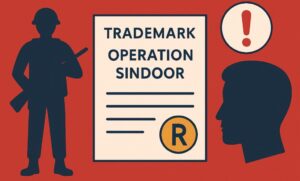Have you ever walked into a restaurant, drawn by its catchy name or eye-catching logo, only to discover that it’s not the establishment you thought it was? In the bustling food and hospitality industry of India, this scenario is becoming increasingly common. As more and more eateries pop up, it’s crucial for restaurant owners to protect their brand’s identity through trademark registration.
A trademark is like a unique fingerprint that sets your goods or services apart from the competition. It’s a legal stamp that says, “This is ours, and no one else can use it.” And in the world of restaurants, where first impressions can make or break your business, a strong trademark can be a game-changer.
Table of Contents
ToggleWhy Trademarks Matter for Restaurateurs?
- Exclusive Rights: Imagine you’ve poured your heart and soul into creating the perfect restaurant concept, complete with a catchy name and a logo that encapsulates your vision. By registering your trademark, you gain the exclusive right to use it within the categories of goods and services specified. No one can swoop in and use a deceptively similar mark, giving you a legal edge over competitors.
- Brand Recognition and Loyalty: Think about the restaurants you frequent regularly. Chances are that their trademarks – whether it’s a quirky name or a memorable logo – have carved out a special place in your heart. A registered trademark helps customers easily identify your restaurant and the quality of your offerings, fostering brand loyalty and attracting new customers like a moth to a flame.
- Protection Against Counterfeiting: In the age of social media and online ordering, counterfeit restaurants or businesses can spring up faster than you can say “fake news.” A registered trademark gives you the legal ammunition to take down these impostors, protecting your reputation and preventing customer confusion.
Success Stories of Trademarked Restaurant Brands
- McDonald’s: When you think of McDonald’s, what comes to mind? Chances are, it’s those iconic golden arches or the “I’m Lovin’ It” slogan. This global giant has fiercely protected its trademarks, allowing it to maintain brand consistency and prevent others from cashing in on its hard-earned reputation.
- Haldiram’s: Closer to home, Haldiram’s, the beloved Indian snack and food brand, has successfully registered trademarks for its name, logo, and other brand elements. This has helped the company maintain its brand identity and prevent imitation products from diluting its market presence.
The Consequences of Neglecting Trademark Protection
- Loss of Brand Distinctiveness: Without a registered trademark, your restaurant’s name or logo could be used by others, leading to customer confusion and diluting the very essence of your brand’s uniqueness.
- Costly Legal Battles: Imagine trying to stop others from using a similar name or logo after you’ve already established your business. Without the protection of a registered trademark, you could find yourself entangled in costly legal battles with no guarantee of success.
- Limited Expansion Opportunities: As your restaurant business grows and dreams of franchising or expanding to new locations become a reality, the lack of a registered trademark can hinder your ability to secure exclusive rights in new markets. It’s like trying to plant your flag without a flagpole.
In the vibrant culinary landscape of India, trademarking your restaurant brand is more than just a formality – it’s a strategic move that can safeguard your business identity, maintain brand recognition, and provide legal recourse against infringement. By understanding the importance of trademarks and understanding the appropriate registration process under Indian trademark law, you can protect your valuable intellectual property and pave the way for a future as bright as a perfectly cooked dish, fresh out of the kitchen.






